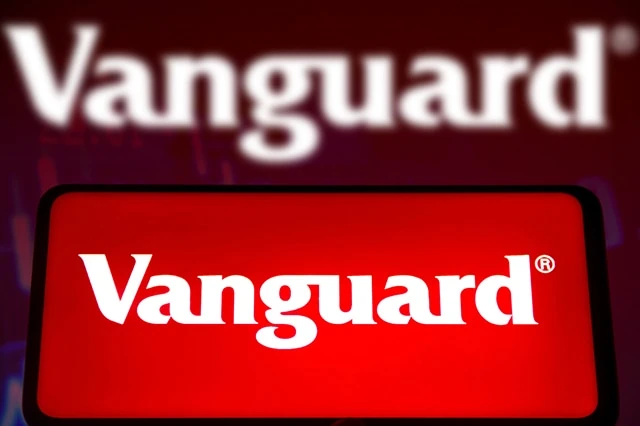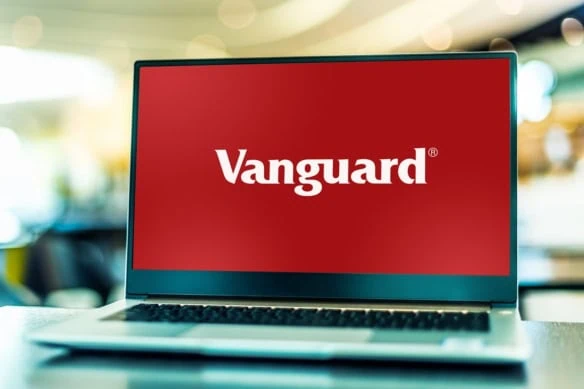Vanguard isn’t just a leader in index funds—for many, the name is virtually synonymous with them. Much like Google is tethered to search and Venmo goes hand in hand with paying your buddy your half of a $28.36 check, when you hear “low-cost index investing,” your brain goes “Vanguard.”
And why shouldn’t it? Vanguard started this game, after all.
Remember: Vanguard founder Jack Bogle created the first index mutual fund back in 1975—a product that not only still exists today, but sits among the world’s largest mutual funds … along with several other Vanguard index funds. Indeed, Vanguard has dozens of indexed products, and most of them will fill an investing need at a bargain-basement cost.
But you don’t need dozens of funds. No investor does. Most of us can do well holding a handful of funds (and, if you like to keep things spicy, a few individual stocks). So if you are looking at the Vanguard family to either build a portfolio from scratch or augment what you’ve already got, you probably want to narrow your focus on the crème de la Vanguard crème.
So, let’s get started. Read on, and I’ll introduce you to some of the best Vanguard index funds you can find. Most of these funds can serve as pillars of your core portfolio, but a few can be used as satellite holdings to help you drive some outperformance. And all of them charge astoundingly low fees.
Disclaimer: This article does not constitute individualized investment advice. These securities appear for your consideration and not as personalized investment recommendations. Act at your own discretion.
Featured Financial Products
Why Index Funds?

When you buy an investment fund, you’re buying exposure to any number of stocks, bonds, or other assets in just one share. For most of their history, human managers decided exactly which investments the fund would buy.
But in 1975, Vanguard changed all that with the advent of the index fund.
An index measures the performance of a group of assets, and those assets are determined by the index’s rules. An index fund “tracks” the index by actually investing in all (or in some cases, a representative sampling of) the underlying assets. An index’s strategy can be broad, like the S&P 500, which measures a wide assortment of American companies. Or the focus can be as narrow as, say, holding only stocks from Peru that have high dividends, low stock valuations, and are based on companies that start with the letter “M.”
While I don’t recommend buying my hypothetical Peruvian Mmm Mmm Good Index Fund, I do recommend buying index funds in general.
For one, they’re inexpensive. An actively managed index fund has one or more managers, all of whom expect to be paid for their troubles. An index fund technically has a manager overseeing the fund, but they’re not performing stock research and deciding on trades—the index’s rules determine those actions. Thus, fund providers can afford to charge (often much) lower expenses on index funds.
Also, index funds aren’t chumps. I’ll provide an eye-opening example a little later, but human managers often struggle to beat the benchmark indexes in the first place. So if you have a fund that simply tracks a benchmark index, and it’s also charging less than most of the human managers trying to beat that benchmark, well … that fund has a decent potential for success.
Also worth noting? Turnover—how much the fund tends to buy and sell holdings—is often extremely low in index funds, as only a handful of holdings tend to enter or leave the underlying index in a given year. As a result, they typically make little to no capital gains distributions at the end of the year. The Vanguard funds I’m about to detail all sport minimal turnover, which makes them very tax-efficient investments for taxable brokerage accounts.
Why Vanguard?

Vanguard Group is one of the largest asset managers in the world, boasting roughly $8 trillion in net assets under management (AUM).
As I mentioned above, one of the primary reasons behind its success is Vanguard’s dirt-cheap expenses. Currently, the firm’s 400-plus funds sport an average asset-weighted expense ratio of just 0.08%, or a mere 80¢ for every $1,000 invested. That’s an astoundingly low number—one that means even when a Vanguard fund isn’t the absolute cheapest in its category, it’s still going to be one of your cheapest options.
These tiny numbers add up to real savings, mind you. As a for-instance, Christine Benz, Morningstar’s Director of Personal Finance and Retirement Planning, wrote in 2023 that in the previous year alone, “Vanguard’s cost advantage saved its investors collectively about $26 billion compared with what they would have shelled out if they had invested in funds with average expenses.”
Much of Vanguard’s success on the fee-fighting front can be chalked up to founder Jack Bogle, who created the first index mutual fund and helped proliferate this fund type. Now, low-cost index funds can be found the world over, bringing costs down for millions of investors—even those who don’t buy Vanguard’s products.
But Bogle, too, was responsible for more than just cheap investing. His investment philosophies helped shape Vanguard into the titan it is today, and sparked a group (the Bogleheads) who energetically follow in his footsteps.
Related: Best Vanguard Retirement Funds for a 401(k) Plan
How Were the Best Vanguard Index Funds Selected?

Vanguard boasts one of the largest collections of indexed mutual funds on the planet—more than 130 at last check. Not exactly the easiest number to pare down.
I’ve started with a quality screen, including only Vanguard index funds that have earned the top Morningstar Medalist rating of Gold. Unlike Morningstar’s Star ratings, which are based upon past performance, Morningstar Medalist ratings are a forward-looking analytical view of a fund. Per Morningstar:
“For actively managed funds, the top three ratings of Gold, Silver, and Bronze all indicate that our analysts expect the rated investment vehicle to produce positive alpha relative to its Morningstar Category index over the long term, meaning a period of at least five years. For passive strategies, the same ratings indicate that we expect the fund to deliver alpha relative to its Morningstar Category index that is above the lesser of the category median or zero over the long term.”
As I’ve written in other WealthUp articles, a Medalist rating doesn’t mean Morningstar is necessarily bullish on the underlying asset class or categorization. It’s merely an expression of confidence in the fund compared to its peers.
Because one of the primary draws of Vanguard index funds is low fees, I also decided to only consider funds whose expense ratios are well below their category average. But that ended up being pretty redundant—most Vanguard index mutual funds already fit that bill.
From the remaining universe of several dozen Vanguard index funds, I selected a range of products that fit various portfolio goals and have good-to-great track records.
One thing worth noting before starting out is that most Vanguard funds have a $3,000 minimum initial investment. But don’t worry—most Vanguard index mutual funds have ETF share classes that trade for as little as the price of one share (or less if you have a brokerage that allows fractional shares). So all the funds here should be quite accessible.
1. Vanguard 500 Index Fund Admiral Shares

- Style: U.S. large-cap stock
- Assets under management: $546.4 billion
- Expense ratio: 0.04%, or 40¢ per year for every $1,000 invested
- Dividend yield: 1.3%
- Minimum initial investment: $3,000
Remember when I said Vanguard founder Jack Bogle created the first index fund? That fund, first called the First Index Investment Trust, was shortly thereafter rebranded as the Vanguard 500 Index Fund Admiral Shares (VFIAX)—a fund that’s not only still around today, but one of the largest funds, at more than a trillion dollars in assets across its various share classes. (The assets under management figure shown above specifically represents their Admiral Shares mutual fund class.)
VFIAX tracks the S&P 500 Index—a well-diversified benchmark that has simply given mutual fund managers fits for decades. The majority of fund managers who run large-cap funds (funds that invest in larger companies) struggle to consistently beat the S&P 500 Index, particularly after fees. According to S&P Dow Jones Indices, “60% of all active large-cap U.S. equity funds underperformed the S&P 500.” That’s no anomaly: A majority of active managers have now failed to beat the S&P 500 in 21 of the past 24 years.
My advice: If you can’t beat it, join it.
The Vanguard 500 Index Fund Admiral Shares, by virtue of tracking the S&P 500, holds shares of 500 large, dominant U.S. companies. But it doesn’t hold them equally. The S&P 500 is “market-cap weighted,” which means the larger the company, the more weight the stock has in the index (and thus the more impact it has on returns). For instance, right now, VFIAX dedicates the largest portions of its assets to companies like Microsoft (MSFT), Apple (AAPL), and Nvidia (NVDA), whose market caps are measured in trillions. It’s also considered to be a “blend” fund, which means it has relatively even exposure to value stocks and growth stocks.
Financial experts frequently suggest using an S&P 500 fund as the core of your portfolio given its exposure to hundreds of larger, more financially stable companies across all sectors—from tech to health care to real estate. Because of this diversity of holdings, the S&P 500 not only provides access to the growth of the American economy—but a modest level of dividend income, too. VFIAX’s yield might not seem like much right now, but reinvested over time, the S&P 500’s dividends make up roughly 35% to 50% of the index’s returns over the very long term (depending on the time period and study you’re looking at).
Also, as I mentioned before, most Vanguard index mutual funds have an ETF share class. Here, VFIAX’s sister Vanguard ETF is the Vanguard S&P 500 ETF (VOO), which charges 0.03% annually.
Want to learn more about VFIAX? Check out the Vanguard provider site.
Related: 7 High-Quality, High-Yield Dividend Stocks to Buy
2. Vanguard High Dividend Yield Index Fund Admiral Shares

- Style: U.S. large-cap dividend stock
- Assets under management: $13.7 billion
- Expense ratio: 0.08%, or 80¢ per year for every $1,000 invested
- Dividend yield: 2.7%
- Minimum initial investment: $3,000
If you’re interested in generating a higher level of income than what the S&P 500 can provide, but you still want access to the growth potential of stocks, you can do so for cheap via the Vanguard High Dividend Yield Index Fund Admiral Shares (VHYAX).
This Vanguard index mutual fund says it all in the name. It’s designed to deliver a high dividend yield, which it does by tracking an index of stocks that pay higher-than-average dividends. The result is a fairly conservative, largely blue-chip portfolio of roughly 450 stocks weighted by market cap.
“Vanguard High Dividend Yield strikes a balance between higher yield and the inherent risks,” says Morningstar Analyst Bryan Armour. “Weighting stocks by market cap steers the fund toward more stable, large-cap stocks and away from those whose dividends may be distressed”
Interestingly, while VHYAX does provide decent exposure to sectors defined by their defensive nature and higher-than-average dividends, such as health care (12%) and consumer staples (11%), its biggest sector allocation is to financials, which currently command more than 20% of assets. Top holdings are a who’s who of mega-cap dividend payers, including JPMorgan Chase (JPM), Johnson & Johnson (JNJ), and Exxon Mobil (XOM). The end result is exactly what the fund aims for: a nearly 3% yield that’s roughly twice what the S&P 500 delivers.
One noteworthy absence, though, is the real estate sector. VHYAX’s underlying index explicitly excludes real estate investment trusts (REITs)—a group of stocks we’ll get into later. It seems like an odd exclusion, if only because REITs tend to be one of the market’s highest-yielding sectors. One possible explanation? Most common stocks, like those held in this Vanguard fund, pay qualified dividends, which enjoy favorable tax treatment at the long-term capital gains tax rate. Most REIT dividends, however, are non-qualified, which are taxed as ordinary income at federal income tax rates. By excluding REITs, VHYAX can pay out 100% qualified dividend income, helping shareholders avoid a potential tax headache.
VHYAX is also offered in ETF form: the Vanguard High Dividend Yield ETF (VYM) costs 0.06% annually.
Want to learn more about VHYAX? Check out the Vanguard provider site.
Related: 10 Best Fidelity Funds to Buy
Featured Financial Products
3. Vanguard Dividend Appreciation Index Fund Admiral Shares

- Style: U.S. large-cap dividend-growth stock
- Assets under management: $15.7 billion
- Expense ratio: 0.08%, or 80¢ per year for every $1,000 invested
- Dividend yield: 1.7%
- Minimum initial investment: $3,000
Not every fund with “dividend” in the name prioritizes a higher current yield. It likely will … but it’s no guarantee. Sometimes, funds focus on dividends but with a different goal in mind.
For instance, the Vanguard Dividend Appreciation Index Fund Admiral Shares (VDADX) delivers a pretty shrugworthy yield of less than 2% right now. Is it more than the market? Sure. But it’s nowhere close to what VHYAX delivers.
Fortunately, that’s not the point.
This Vanguard dividend fund homes in on U.S. companies that consistently increase their dividends over time. Its underlying index is made up of firms that have improved their payouts on an annual basis for at least 10 consecutive years. The index also excludes the 25% highest-yielding eligible companies from the index. Without getting too far into the weeds, high dividends can sometimes be the result of significant price drops and in some cases might not be sustainable.
What you’re getting with VDADX, then, isn’t necessarily high yield right now, but the potential, over time, for a higher “yield on cost.” Yield on cost is what you’re actually earning based on the price at which you bought the stock. (Example: A $100 stock paying $1 in annual dividends yields 1%. But because you bought the stock at $50, your yield on cost is 2%.)
Also, dividend growers tend to be high-quality companies; only firms with strong financials and excellent cash flows can afford to keep paying shareholders more every year. So, in a way, VDADX’s commitment to dividend growers acts like a quality screen, of sorts, ensuring you’re owning a higher grade of stock.
VDADX holds roughly 340 predominantly large-cap stocks with bulletproof balance sheets and the ability to churn out cash—which they increasingly fork over to shareholders in the form of dividends. All of them have raised their payouts for at least 10 years, but some have much longer histories of uninterrupted dividend growth. Procter & Gamble (PG) and Johnson & Johnson, for instance, are Dividend Kings, which are stocks that have raised their dividends annually for at least 50 consecutive years.
I mentioned above that all the Vanguard index funds on this list have relatively low expenses. VDADX is a great example. The average fee on large-cap funds like this is 0.70%, according to Morningstar. But Vanguard Dividend Appreciation charges a mere 0.08%. Fees are even lower for VDADX’s ETF class, Vanguard Dividend Appreciation ETF (VIG), which charges 0.06%.
Want to learn more about VDADX? Check out the Vanguard provider site.
Related: Best High-Dividend ETFs for Income-Hungry Investors
4. Vanguard Small-Cap Index Fund Admiral Shares

- Style: U.S. small-cap stock
- Assets under management: $55.9 billion
- Expense ratio: 0.05%, or 50¢ for every $1,000 invested
- Dividend yield: 1.3%
- Minimum initial investment: $3,000
If your primary investing concern is growth, and you have a pretty healthy risk appetite, you might get more bang for your buck by investing in small-cap stocks.
As a general rule, smaller companies (usually considered to be those with market caps of $2 billion or less) have more potential for explosive growth. For one, as they say, it’s much easier to double your revenues from $1 million than $1 billion. Also, as these stocks become noticed by institutional investors and fund managers, large investments can help drive their prices further higher, too.
The rub, of course, is that smaller stocks tend to be more volatile. A smaller company’s revenues might be dependent on just one or two products or services—meaning a single disruption could have massive financial consequences. They also have less access to capital than their larger peers, so they’re less likely to get a lifeline should they suffer from broader economic headwinds.
Buying these kinds of stocks individually is a high-risk, high-reward proposal—a company could feasibly double or get cut in half overnight. But if you wanted to harness some of the upside potential of small caps while tamping down risk, you could invest in a small-company fund like the Vanguard Small-Cap Index Fund Admiral Shares (VSMAX).
Vanguard scatters that risk across more than 1,400 U.S. stocks. To be precise, they’re not all “true” small caps—a good third of the portfolio includes smaller mid-cap stocks, which as a group range from $2 billion to $10 billion. But this kind of bleed isn’t unusual for “-cap” funds; different fund companies and their indexes often have different thresholds for what defines each cap class.
Single-stock risk is extremely minimal. Even the fund’s top holdings account for less than a half a percent of assets each. Yes, that means you won’t enjoy the full potential of any wild upside, but you also won’t feel the full brunt of a stock collapse, either.
VSMAX is also available as an ETF: The Vanguard Small-Cap ETF (VB), which costs 0.05% annually.
Want to learn more about VSMAX? Check out the Vanguard provider site.
Make sure you sign up for The Weekend Tea, WealthUp’s free weekly newsletter that over 10k monthly readers use to level up their money know-how.
Related: 9 Best Fidelity Index Funds to Buy
5. Vanguard Mid-Cap Index Fund Admiral Shares

- Style: U.S. mid-cap stock
- Assets under management: $62.6 billion
- Expense ratio: 0.05%, or 50¢ per year for every $1,000 invested
- Dividend yield: 1.4%
- Minimum initial investment: $3,000
Mid-cap stocks (typically considered to be companies between $2 billion and $10 billion in market cap) are the “Goldilocks” holding of the stock world. They’re bigger, more stable, and have better access to capital than their small-cap brethren, but they tend to be nimbler and have more upside potential to their big brothers in the large-cap space. Unfortunately, they often go ignored by people who gravitate either toward big, “safe” blue chips or potent small-caps … to their detriment.
“In any given 1-year rolling period since 2003, small-, mid-, and large-cap stocks have outperformed 33%, 26%, and 41% of the time,” says investment company Hennessy Funds. “However, the longer mid-cap stocks are held, the more often they outperformed. In fact, 60% of the time, mid-caps outperformed small- and large-cap stocks over any 10-year rolling period in the past 20 years.”
Better still? During the 20-year period (through 9/30/23) that Hennessy studied, they found that while mid-caps delivered higher risk than large-caps, they delivered better returns … and they generated both lower risk and higher returns than small caps.
If you’d like to inject your portfolio with some mid-cap exposure, you can do so cost-effectively with the Vanguard Mid-Cap Index Fund Admiral Shares (VIMAX). This Gold-rated fund owns roughly 340 stocks—it’s not a pure mid-cap fund, with roughly 10% to 15% of assets veering into large-cap territory. But VIMAX also boasts less concentration among top holdings than similar funds; indeed, no single stock accounts for more than 1% of assets, minimizing single-stock risk.
Again, as is common among Vanguard index mutual funds, VIMAX has a sister ETF: the Vanguard Mid-Cap ETF (VO), which charges 0.04% annually.
Want to learn more about VIMAX? Check out the Vanguard provider site.
Related: 10 Best Dividend Stocks to Buy [Steady Eddies]
6. Vanguard Total Stock Market Index Fund Admiral Shares

- Style: U.S. total-market stock
- Assets under management: $396.4 billion
- Expense ratio: 0.04%, or 40¢ per year for every $1,000 invested
- Dividend yield: 1.2%
- Minimum initial investment: $3,000
If you’re not exactly keen on the idea of buying several funds just to get access to U.S. stocks of different sizes, don’t worry—you don’t have to.
You can just buy the Vanguard Total Stock Market Index Fund Admiral Shares (VTSAX) instead.
VTSAX is “designed to provide investors with exposure to the entire U.S. equity market.” It doesn’t do exactly that, but it comes mighty close, owning roughly 3,700 U.S. stocks of all sizes.
A total-market fund typically won’t give you equal exposure to these different stock sizes—they’re typically market cap-weighted and lean heaviest on large caps. That’s certainly the case for VTSAX, which is 72% invested in large caps right now, with another 20% in mid-caps and the remaining 8% in small companies. That market cap-weighting also ensures that mega-caps like Microsoft, Apple, and Nvidia still have the greatest influence on performance.
The upside to buying VTSAX is sweet simplicity—with one fund, you’re getting some of the most comprehensive U.S. stock-market exposure you could want. And at just 0.04% annually, you’re getting it at bargain-basement prices.
Any downside really only exists if you want different levels of large-, mid-, and/or small-cap exposure than what VTSAX provides. If so, you could ignore VTSAX and just build your U.S. stock portfolio with large-, mid-, and small-cap funds, or you could buy VTSAX and augment with large-, mid-, or small-cap funds to get the perfect allocation for you.
For what it’s worth, Vanguard Total Stock Market seems to be just fine for plenty of investors. The fund has amassed $1.7 trillion in assets across its share classes, which includes the Vanguard Total Stock Market ETF (VTI, 0.03% expense ratio).
Want to learn more about VTSAX? Check out the Vanguard provider site.
Related: 9 Monthly Dividend Stocks for Frequent, Regular Income
Featured Financial Products
7. Vanguard Real Estate Index Fund Admiral Shares

- Style: U.S. sector (real estate)
- Assets under management: $21.5 billion
- Expense ratio: 0.13%, or $1.30 per year for every $1,000 invested
- Dividend yield: 3.7%
- Minimum initial investment: $3,000
I mentioned earlier that Vanguard High Dividend Yield excluded real estate investment trusts (REITs). But if you want exposure to that sector, you can do so through the Vanguard Real Estate Index Fund Admiral Shares (VGSLX).
Real estate investment trusts are a special class of company that boasts a few different rules, but whose shares still trade like your average stock. REITs, which were created in 1960 to help make real estate more accessible to the average Joe, are companies that own and often operate real estate of all kinds—apartment buildings, strip malls, hotels, you name it.
Importantly, REITs generally enjoy an exemption from corporate income taxes … in exchange for distributing 90% of their taxable income as dividends to their shareholders. As a result, REIT dividends tend to be mighty generous.
One way to invest in many of these opportunities at once is through a real estate fund like VGSLX. This Vanguard index fund holds roughly 160 real estate stocks that deal in a variety of property types, including industrial, retail, telecom tower, self-storage, office, residential, and more. For instance, right now, top holdings include logistics and warehousing REIT Prologis (PLD), telecommunications infrastructure play American Tower (AMT), and mall giant Simon Property Group (SPG).
And true to its nature, VGSLX currently yields a healthy ~4%—not just nearly three times what you’d get from an S&P 500 fund, but well more than you’d receive from even most high-yield dividend funds.
You can get VGSLX in ETF form via the Vanguard Real Estate ETF (VNQ), which charges 0.13% annually.
Want to learn more about VGSLX? Check out the Vanguard provider site.
Related: 7 Best T. Rowe Price Funds to Buy
8. Vanguard International Dividend Appreciation Index Fund Admiral Shares

- Style: Foreign large-cap growth stock
- Assets under management: $375.4 million
- Expense ratio: 0.16%, or $1.60 per year for every $1,000 invested
- Dividend yield: 2.0%
- Minimum initial investment: $3,000
You might have noticed that all of the above funds have had a specifically U.S.-centric bent. That’s good—U.S. markets have long been among the most productive in the world, and if you believe in the American economy’s ability to keep growing, that should remain the case.
But most experts would tell you that it’s worth having at least some international exposure, and one way to do that is through the Vanguard International Dividend Appreciation Index Fund Admiral Shares (VIAAX).
Vanguard International Dividend Appreciation Index has a similar thrust to Vanguard Dividend Growth in that it’s interested in owning high-quality companies, which it does by identifying and holding companies with a history of increasing their dividends. VIAAX tracks the S&P Global Ex-U.S. Dividend Growers Index, which consists of international firms that have improved their payouts on an annual basis for at least seven consecutive years. Also, as an additional quality screen, the index excludes the 25% highest-yielding eligible companies from the index. Without getting too far into the weeds, high dividends can sometimes be the result of significant price drops and in some cases might not be sustainable.
VIAAX is most heavily invested in developed European and Asian markets such as Japan, Switzerland, and the U.K., though it also has a high concentration in Canadian stocks, as well as some exposure to emerging markets such as India and Mexico. But many of its 300-plus holdings will be plenty familiar to Americans—it’s loaded with blue-chip multinational firms like Swiss food giant Nestlé (NSRGY), Japanese tech titan Sony (SNE), and Canadian financial Toronto-Dominion Bank (TD). And, as is common with developed-country funds, the yield, currently at ~2%, is higher than comparable U.S. funds.
You can get this Vanguard fund as an ETF, too: the Vanguard International Dividend Appreciation ETF (VIGI), which charges 0.15% annually.
Want to learn more about VIAAX? Check out the Vanguard provider site.
Make sure you sign up for The Weekend Tea, WealthUp’s free weekly newsletter that over 10k monthly readers use to level up their money know-how.
Related: 7 Best Schwab Funds to Buy
9. Vanguard Intermediate-Term Bond Index Fund Admiral Shares

- Style: Intermediate-term core bond
- Assets under management: $17.4 billion
- Expense ratio: 0.07%, or 70¢ per year for every $1,000 invested
- SEC yield: 4.6%*
- Minimum initial investment: $3,000
Most investors will want some exposure to bonds—debt issued by governments, companies, and other entities that pay interest to bondholders. But how much will largely depend on your age.
Bonds tend to be much less volatile than stocks, for better or worse; it limits downside, yes, but it also limits upside. Instead, most of the return from bonds comes from the steady stream of interest income they produce. They’re not great for generating wealth, which is your prime concern when you’re younger, but they’re outstanding for protecting wealth, which becomes increasingly pivotal as you age.
But it’s tough to go out and buy, say, a single bond. Data and research on individual issues is much thinner than it is for publicly traded stocks, plus, some bonds have minimum investments in the tens of thousands of dollars. So, your best (and most economical) bet is to buy a bond fund, which can provide you with access to hundreds if not thousands of bonds.
One well-respected option is the Vanguard Intermediate-Term Bond Index Fund Admiral Shares (VBILX). This is a “core” bond fund that invests in several bond types, including:
- Treasury bonds (bonds issued by the U.S. government)
- Agency bonds (bonds issued by a U.S. government-sponsored department or enterprise)
- Corporate bonds (bonds issued by a company)
- Foreign sovereign bonds (bonds issued by foreign governments)
VBILX holds more than 2,200 intermediate-term bonds, which are bonds that mature in five to 10 years. It also only holds “investment-grade bonds”—bonds that the credit ratings agencies have deemed to have varying low levels of risk of default. In short, this is a fairly high-quality, moderate-risk bond fund. Duration (a measure of interest-rate risk) is 6.2 years, which implies that a 1-percentage-point increase in interest rates would lead to a 6.2% decline in the fund, and vice versa.
Alternatively, you can buy the ETF version: the Vanguard Intermediate Term Bond ETF (BIV, 0.04% expenses).
* SEC yield reflects the interest earned across the most recent 30-day period. This is a standard measure for funds holding bonds and preferred stocks.
Want to learn more about VBILX? Check out the Vanguard provider site.
Related: Best Vanguard Retirement Funds to Hold in an IRA
10. Vanguard Short-Term Treasury Index Fund Admiral Shares

- Style: Short-term U.S. Treasury bond
- Assets under management: $2.7 billion
- Expense ratio: 0.07%, or 70¢ per year for every $1,000 invested
- SEC yield: 4.3%
- Minimum initial investment: $3,000
Just like stocks, bonds have varying levels of risk and potential reward. The Vanguard Short-Term Treasury Index Fund Admiral Shares (VSBSX) focuses on a subset of bonds that have very low risk for two reasons: they have short maturities, and they’re issued by the U.S. Treasury.
Maturity helps determine risk. Generally speaking, the longer the bond, the greater the risk that the bond might not be repaid. Interest rates come into play, too. When rates go higher, new bonds pay more, which tempt people to sell their old bonds for the new, higher-paying bonds. But the temptation is much greater when you’re dealing with longer-term bonds with lots of payments remaining—and not so great for short-term bonds with one or just a couple payments left.
Meanwhile, U.S. Treasury bonds, which are backed by the full faith and credit of the U.S. government, are some of the highest-rated bonds on the planet. Is there 100% certainty they’ll be repaid? No. But is there a higher likelihood of repayment than the vast majority of issuers out there? Yes.
VSBSX invests in fewer than 100 Treasury bond issues with maturities of between one and three years. And the lower risk is reflected in the averaged duration, which currently sits at just 1.9 years—so while a 1-percentage-point hike in interest rates would knock Vanguard Intermediate-Term Bond Index 6.2% lower, Vanguard Short-Term Treasury Index theoretically would only decline by 1.9%. The flip side? VSBSX wouldn’t rise as much if interest rates declined.
But that’s OK, as long as you know what you’re buying! If all you want is portfolio protection that can still generate some yield (around 4% currently), VSBSX is one of the best Vanguard index mutual funds you can buy. Or, if you prefer ETFs, you can purchase the Vanguard Short-Term Treasury ETF (VGSH, 0.04% expenses) instead.
Want to learn more about VSBSX? Check out the Vanguard provider site.
Related: 7 Best Schwab Index Funds to Buy
Featured Financial Products
How Does Your Portfolio Look? Ask Empower

More than 3 million users are putting their retirement on track by putting Empower’s tools and/or advisory services to work for them.
Wondering how your portfolio is shaping up? Sign up with Empower to use its free Investment Checkup tool, which can help you assess your portfolio risk, analyze past performance, and get a target allocation for your portfolio. You can even compare your portfolio to both the S&P 500 and Empower’s “Smart Weighting” Recommendation.
And if you want a fuller advisory experience? Empower’s full-service Wealth Management account pairs the firm’s tools with skilled human management. Empower will create a recommended portfolio spanning six asset classes, then help you implement your plans by giving you access to financial advisors who can guide you through retirement planning, college savings, workplace stock options, and more.
Regardless of how much money you bring to the table, if you sign up, you will be given the option to schedule an initial 30-minute financial consultation with an Empower advisor.
- Empower (formerly Personal Capital) offers both a free set of portfolio, net worth, and cash flow tracking tools, as well as paid asset management service.
- Link Empower to your bank and investing accounts, credit cards, and more to see a single view of useful information and data, including your net worth.
- Empower Wealth Management offers unlimited advice and retirement planning help, as well as managed ETF portfolios, for accounts with between $100,000 and $250,000 in assets. Higher asset tiers include access to dedicated financial advisors, retirement specialists, and more investment options (including stocks, options, real estate, and private equity).
- Free portfolio tracker
- Free net worth, cash flow, and investment reporting tools
- Dedicated investment advisor
- Free tax-loss harvesting
- Dividend reinvestment
- Automatic rebalancing
- 5-day-a-week live customer support, 24/7 email support
- High minimum for investment management ($100k)
- High investment management fee (0.89% AUM)
Make sure you sign up for The Weekend Tea, WealthUp’s free weekly newsletter that over 10k monthly readers use to level up their money know-how.
Vanguard Funds: Frequently Asked Questions (FAQs)

What is the minimum investment amount on Vanguard mutual funds?
Vanguard funds are known for being shareholder-friendly. The Vanguard mutual fund company blazed new trails with the index fund, and Vanguard has done more than any other investment firm to keep costs to a minimum for investors.
But there is one hitch. Many of Vanguard’s cheapest funds in terms of fees have initial investment minimums of around $3,000.
If that is a problem for you, don’t sweat it. Most popular Vanguard index funds are also available as ETFs. Most self-directed HSAs will allow you to buy as little as one share, and some even allow for fractional shares. And if you use a commission-free brokerage, you can buy those ETFs without incurring additional fees. ETF prices vary, of course, but many cost less than $100, and they rarely exceed $400 per share.









